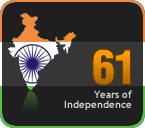the AIS by far has to be the uniformly crappiest of all equipment. Its not
crappy because of its purpose - Which nobody clearly understands. Is it
supposed to be for ship security? How is is supposed to achieve that if it
keeps broadcasting your position to everybody? Or is it for collision
avoidance? Does it come under Rule 5 of Colreg? Its not a hotly debated
topic as one might assume it to be. The reason is - crappy equipment. Give
the ships crew a 0.50 Calibre Remington Sniper rifle and they will discuss
the purpose of it late into the night - From Anti piracy to settling
interdepartmental disputes. But give the men an AIS and they will use it as
paperweight. The AIS has to be the most unfriendly equipment to operate
on the bridge. With dull black & white screens sometimes smaller then an
iphones, you are left to make sense of various ships in assorted azimuth,
range and sub-menu selections.
Which is why if any practical sense of AIS information is needed, you need
to give its feed into another equipment. A Radar or an ECDIS.
On this ship, the feed for the AIS goes into the ECDIS and not into the
Radar. This has been bugging me during my hours on the bridge. I know its
probably just me sulking at change, but the ECDIS and the radar are placed
right next to one another and it certainly wouldn't have been difficult for
the chap giving the feed to put in another wire. So someone must have taken
a decision to give only one feed. And that one feed was decided to go into
the ECDIS and not into the Radar. Now that is what is bugging me.
Having an AIS input into the Radar does allow the operator to make better
sense of the Radar picture. Also the ARPA and AIS information when provided
side by side gives better comparison and cross check of Data. For example
Radar Limitations such as Range or bearing discrimination can be better
resolved by an AIS when looking at a crowded anchorage, and ARPA limitations
such as an target swap or time delay in accurate CPA/TCPA can be cross
checked by the adjacent AIS information.
Putting AIS information on the ECDIS is similar to getting a cadet to plot
other ships on
the BA paper charts. While it may give more information to the navigator,
his ability to use the data to full advantage will suffer.
In my opinion, the ECDIS is primararily a Navigation tool, whereas the Radar
is primararily a collision avoidance tool. Whereas I have always used the
Radar also for navigation purposes, it is probably the first time that I am
seeing an tendency to use the ECDIS for collision avoidance. There always
has been a danger of overreliance of the bridge team on the ECDIS, and
giving the AIS feed into the ECDIS and not the Radar simply reinforces that.
I do agree that the solution to over- reliance on an equipment can not be to
reduce the information provided on it, but instead has to be somewhere in
the better training of the operators to deal with understanding the
limitations and proper utilization of that information. But if given a
choice between the two, I would prefer the AIS feed into the Radar rather
then the ECDIS.
A few years back, one of the nightmares of the ships master was that of the
duty officer wouldn't even look outside because of the Radar. Now because of
AIS feeds into the ECDIS, the chap isn't even going to look into the Radar!







3 comments:
Good point, I've been thinking about this for a while. I think the purpose of AIS is to enhance security shoreside, any benefits to navigators is an unintended consequence.
As Ken says a good poimt . You must put it up in the next convention / seminar . You will be surprised to see the number of people agreeing with you but did not have the time ( ? ) to put it across any forum . About over reliance, could't agree more .
In my plane(circa1967) we had no nav aids except DME which was U/S ( Un-Serveciable) most of the time . As a result we had to have full knowledge of our ground position at all times . With leading a formation of 4 aircraft and / or milling around of 6 to 8 aircraft in the combat, keeping track of each and every one for "debrief" and also of ground position took some doing . Around Then MIg 21s were inducted . It had a radio compass . Within no time mig jokyes became so dependent on the RC that if it went US we had to escort them back to base as they did not know where they were :-)
Well first, in my 10 year career aboard ship, I have yet to sail with an ECDIS (although that is changing for me soon). But we noticed the same problems and are working on a solution over at gCaptain... an iPhone app that hopes to make the access and separation of AIS data clear.
Unfortunately I might have bit off more than I can chew during the announcement (it sparked some heated debate over on our forum) but I do hope we are moving toward the right direction.
Post a Comment